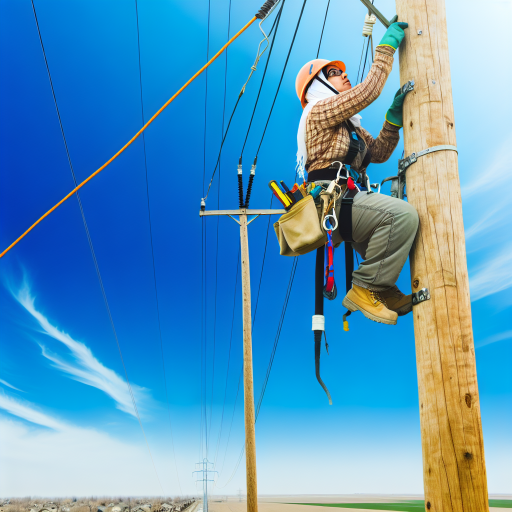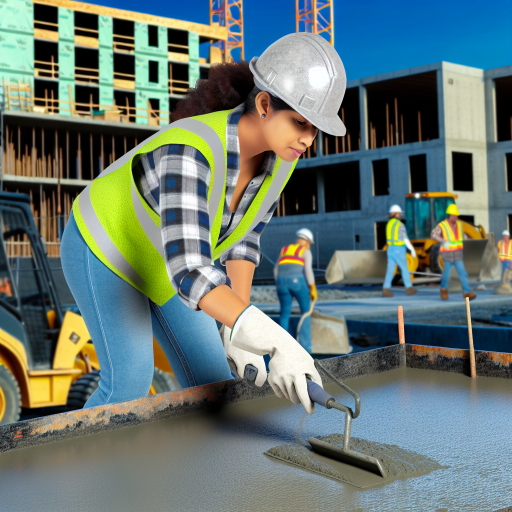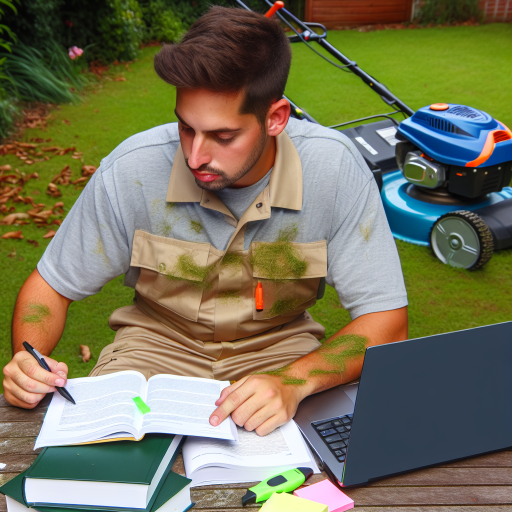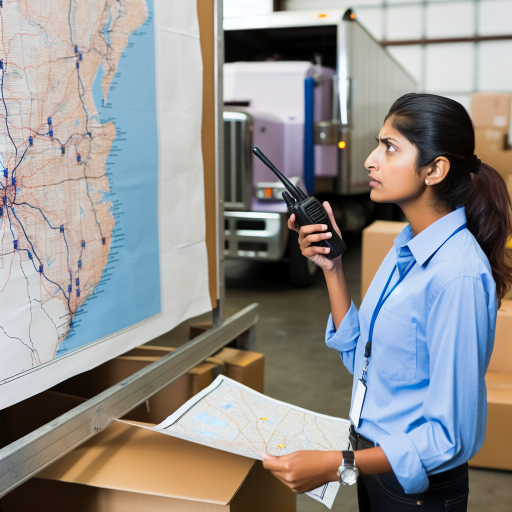Introduction:
Mining is a crucial industry that provides valuable resources.
However, it comes with numerous risks and dangers for workers.
It is essential for miners to prioritize safety.
They must follow strict protocols while working underground.
This is vital to prevent accidents and injuries.
Underground mining poses unique challenges.
These include the risk of cave-ins, explosions, toxic gases, and equipment malfunctions.
Such dangers can result in serious harm or even fatalities.
Proper precautions must be taken to mitigate these risks.
Following safety guidelines is critical for miners.
By adhering to protocols, miners can ensure their well-being.
Protocols include wearing protective gear and undergoing regular training.
Practicing emergency drills is also essential.
These measures significantly reduce the likelihood of accidents.
A safe working environment is crucial for all miners.
Proper Training and Education:
Adequate training is essential before entering a mine to ensure safety.
Understanding safety procedures, emergency protocols, and equipment operation is crucial.
Proper training significantly reduces accidents and improves overall safety underground.
Mines can be dangerous environments, so it is imperative for miners to be well-prepared.
Training should cover topics such as hazard recognition, communication methods, and first aid.
Transform Your Career Today
Unlock a personalized career strategy that drives real results. Get tailored advice and a roadmap designed just for you.
Start NowMiners should also be educated on the specific risks and challenges associated with underground work.
Knowing how to respond in emergencies can make a difference between life and death.
Regular training sessions should be provided to keep miners updated on safety practices.
Experienced miners should mentor new hires to ensure they understand safety protocols.
By investing in proper training and education, mines can create a culture of safety.
Continuous learning and improvement are key in maintaining a safe working environment underground.
Mining companies should prioritize training to protect their workers and prevent accidents.
Safety training not only benefits the miners but also the productivity and reputation of the mine.
Proper training and education are fundamental in keeping miners safe underground.
Use of Personal Protective Equipment (PPE):
- Miners should wear helmets, gloves, safety glasses, and boots.
- Wearing protective gear at all times prevents injuries from hazards.
- Regularly maintain and inspect PPE for maximum effectiveness.
Personal Protective Equipment (PPE) is essential for miners working underground.
These items are designed to protect miners from various hazards they may encounter in their daily tasks.
Here are some key PPE items that miners should wear:
Helmets:
Miners should always wear helmets to protect their heads from falling debris, loose rocks, or other objects that could cause severe head injuries.
Helmets should fit properly and be securely fastened to the head to ensure maximum protection.
Gloves:
Wearing gloves is crucial for miners to protect their hands from cuts, abrasions, or chemical exposure.
Miners should choose gloves that are durable, comfortable, and provide a good grip to handle tools and equipment safely.
Safety Glasses:
Safety glasses are essential for protecting the eyes from dust, flying debris, chemicals, and other hazards that could cause eye injuries.
Miners should wear safety glasses with side shields and anti-fog coatings for added protection.
Boots:
Miners should wear sturdy, slip-resistant boots with steel toe caps to protect their feet from heavy objects, sharp materials, or crushing injuries.
Properly fitted boots provide ankle support and reduce the risk of slips, trips, and falls.
Transform Your Career Today
Unlock a personalized career strategy that drives real results. Get tailored advice and a roadmap designed just for you.
Start NowIt is crucial for miners to wear all necessary PPE items at all times while working underground.
Failure to do so can result in serious injuries or even fatalities.
Here are some reasons why wearing protective gear is so important:
Prevention of Injuries:
Wearing PPE helps prevent injuries caused by falling debris, chemical exposure, or other hazards present in mining environments.
Properly fitted and maintained PPE can significantly reduce the risk of accidents and injuries.
Compliance with Regulations:
Mining regulations require miners to wear specific PPE based on the nature of their work and the hazards they may encounter.
Failure to comply with these regulations can result in fines, penalties, or even shutdowns of mining operations.
Enhanced Safety Culture:
By prioritizing the use of PPE, miners contribute to creating a safety-conscious work environment where all team members are encouraged to prioritize their safety and the safety of others.
Wearing PPE sets a positive example for new miners and reinforces the importance of safety practices.
To ensure the effectiveness of PPE, miners should follow these tips to maintain and inspect their gear regularly:
Inspect Regularly:
Miners should inspect their PPE before each shift to check for any signs of damage, wear, or deterioration.
Any damaged or malfunctioning gear should be replaced immediately to avoid compromising safety.
Clean and Store Properly:
PPE should be cleaned regularly using appropriate cleaning methods and stored in a clean, dry place when not in use.
Keeping PPE clean and well-maintained extends its lifespan and ensures it functions properly when needed.
Replace When Necessary:
Miners should replace PPE items according to the manufacturer’s guidelines or if they show signs of wear, tear, or damage.
Using worn-out or damaged gear can reduce its protective capabilities and increase the risk of injuries.
Find Out More: The Impact of Mining on the Environment
Hazard Identification and Risk Assessment
Identifying potential hazards in the mine environment is crucial for ensuring the safety of miners.
By recognizing potential risks, steps can be taken to minimize the likelihood of accidents and injuries.
Here are some key points to consider:
Transform Your Career Today
Unlock a personalized career strategy that drives real results. Get tailored advice and a roadmap designed just for you.
Start Now- Utilize Experienced Personnel: It is essential to have a team of experienced individuals who are trained to identify hazards specific to mining operations.
- Regular Inspections: Conducting regular inspections of the work area can help in identifying any new hazards that may have emerged.
- Employee Feedback: Encourage miners to report any safety concerns they observed during their work shifts.
Importance of Conducting Risk Assessments
Risk assessments play a crucial role in evaluating the likelihood of accidents and their potential consequences.
By conducting risk assessments, mining companies can:
- Prevent Accidents: By identifying and mitigating potential risks, accidents can be avoided.
- Enhance Safety Protocols: By understanding the risks involved, safety protocols can be tailored to address specific hazards.
- Comply with Regulations: Many regulatory bodies require mining companies to conduct risk assessments to ensure compliance with safety standards.
Strategies for Mitigating Risks
Once potential hazards have been identified and risk assessments conducted, it is essential to implement strategies to mitigate risks effectively.
Here are some measures that can be taken:
- Implement Safety Barriers: Installing physical barriers can help prevent miners from accessing hazardous areas.
- Use Signage: Clearly visible signage can alert miners to potential hazards and remind them of safety protocols.
- Warning Systems: Implementing warning systems, such as alarms or flashing lights, can notify miners of imminent dangers in real-time.
Hazard identification and risk assessment are critical components of ensuring miner safety underground.
By taking proactive measures to identify and mitigate risks, mining companies can create a safer working environment for their employees.
Explore Further: Top Safety Tips for Dockworkers Handling Heavy Cargo
Communication and Emergency Preparedness:
Clear communication is vital during emergencies to ensure the safety of miners and effective response.
Establishing emergency response plans and procedures is crucial to handle unforeseen situations underground.
Regular drills should be conducted to practice emergency protocols and familiarize miners with evacuation procedures.
Tips for Effective Emergency Response:
- Remain calm and assess the situation before taking any action.
- Follow the guidelines provided in the emergency response plan.
- Communicate with fellow miners and supervisors to coordinate efforts.
- Stay informed about the location of emergency exits and safety equipment.
- Be prepared to assist others who may need help during the emergency.
Explore Further: Top Tools for Efficient Drywall Installation
Proper Equipment Maintenance
Regular maintenance and inspection of mining equipment are crucial for ensuring the safety of miners underground.
By properly maintaining equipment, miners can prevent accidents and malfunctions that may endanger their lives.
Here are some key points to consider when it comes to equipment maintenance:
Importance of Regular Maintenance
Regular maintenance is essential for keeping mining equipment in proper working condition.
Over time, equipment undergoes wear and tear due to the harsh conditions underground.
This wear and tear can lead to malfunctions and breakdowns, which can put miners at risk.
By conducting regular maintenance checks, miners can identify any potential issues before they escalate into major problems.
This proactive approach helps prevent accidents and ensures that equipment functions efficiently, reducing downtime and increasing productivity.
Risks of Using Faulty Equipment
Using faulty or malfunctioning equipment poses a significant risk to miner safety underground.
Transform Your Career Today
Unlock a personalized career strategy that drives real results. Get tailored advice and a roadmap designed just for you.
Start NowWhen equipment fails to function properly, it can lead to accidents such as cave-ins, explosions, or equipment-related injuries.
These accidents can have serious consequences, including injury or even death.
Furthermore, faulty equipment can impact the overall safety of the mine by creating hazardous conditions for other miners.
A single malfunctioning piece of equipment can disrupt operations and endanger the lives of multiple miners.
Therefore, it is crucial to address any equipment issues promptly to maintain a safe working environment.
Guidelines for Maintaining Equipment
Miners should follow specific guidelines for maintaining equipment to ensure optimal safety and performance.
- Lubrication: Regularly lubricate moving parts of equipment to reduce friction and prevent wear.
- Cleaning: Keep equipment clean and free of debris to prevent malfunctions and maintain proper functioning.
- Reporting Issues: Promptly report any equipment issues to maintenance personnel to address problems before they escalate.
By adhering to these guidelines, miners can prolong the lifespan of equipment, reduce the risk of accidents, and promote a safe working environment underground.
Regular maintenance is a critical aspect of miner safety and should not be overlooked.
Delve into the Subject: The Role of Lumberjacks in the Timber Industry
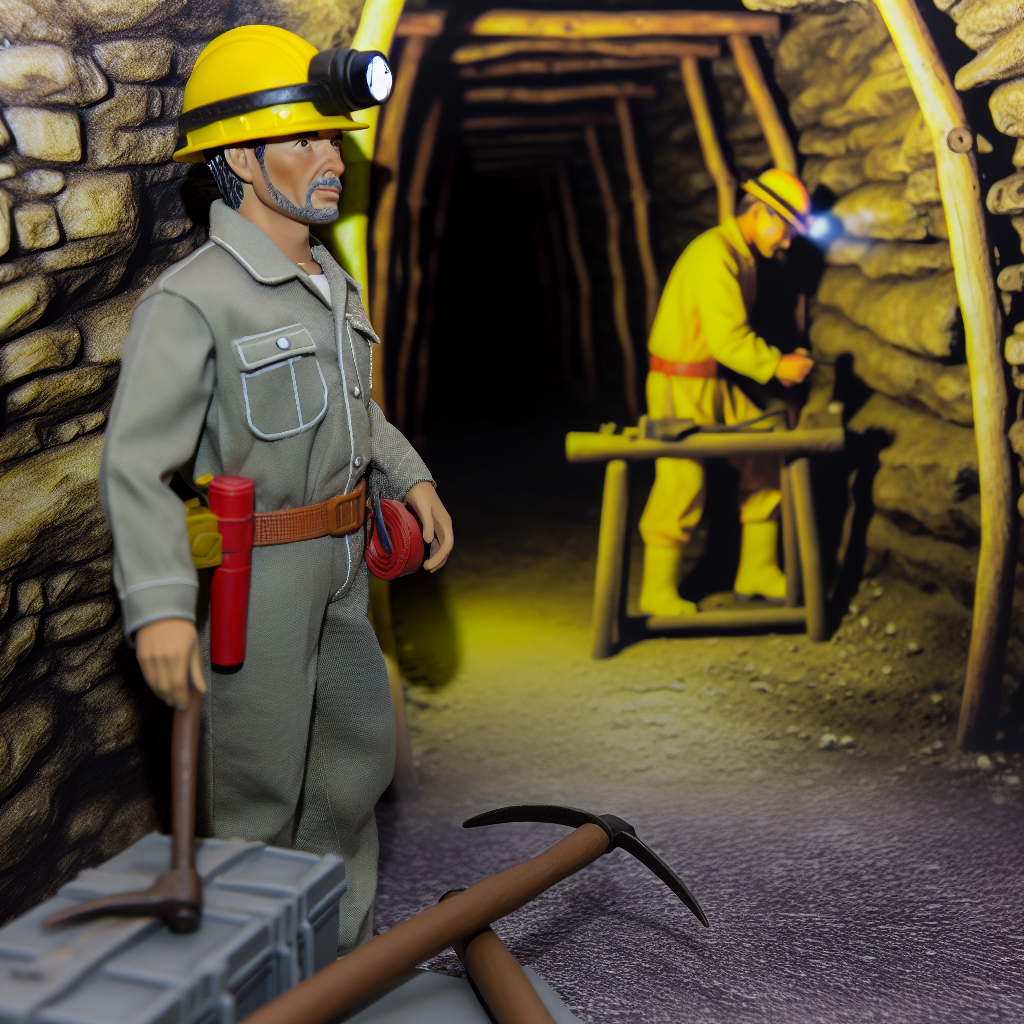
Proper Ventilation and Air Quality:
Maintaining proper ventilation systems within mines is crucial for creating a safe and healthy work environment for miners.
Here’s why:
- Proper ventilation helps to circulate fresh air throughout the mine, reducing the concentration of harmful gases and improving air quality.
- Inadequate ventilation can lead to the accumulation of toxic gases such as carbon monoxide, methane, and sulfur dioxide, posing serious health risks to miners.
- Exposure to high levels of dust and fumes underground can cause respiratory issues, eye irritation, and other health problems. Ventilation systems help to mitigate these risks.
Risks of Exposure to Harmful Gases, Dust, and Fumes:
Miners working underground are at risk of exposure to a variety of harmful substances that can jeopardize their health and safety:
- Carbon monoxide, a colorless and odorless gas, can be produced by diesel engines and explosives used in mining, leading to carbon monoxide poisoning.
- Methane, a flammable gas commonly found in mines, is a serious explosion hazard if not properly controlled through ventilation and monitoring systems.
- Dust particles generated during drilling, blasting, and rock handling operations can cause lung diseases such as silicosis, while fumes from diesel equipment can irritate the respiratory system.
Tips for Monitoring Air Quality and Ensuring Safe Breathing Atmosphere:
Miners can take proactive steps to monitor air quality and maintain a safe breathing environment while working underground:
- Regularly test the air for harmful gases using portable gas detectors and monitoring equipment to ensure early detection of dangerous levels.
- Install and maintain ventilation systems, including fans and ductwork, to ensure proper airflow and circulation of fresh air throughout the mine workings.
- Implement dust control measures such as water sprays, dust suppression systems, and personal protective equipment to reduce the risk of respiratory problems from airborne particles.
By prioritizing proper ventilation and air quality management, miners can significantly reduce the risks associated with harmful gases, dust, and fumes in underground mining environments.
Mental Health and Well-being
Working in the mining industry can be extremely challenging, both physically and mentally.
Miners often face isolation, dangerous conditions, and high levels of stress.
It’s important to address the mental and emotional challenges faced by miners and provide support for their well-being.
Challenges Faced by Miners
- Isolation: Spending long hours underground can lead to feelings of loneliness and isolation.
- Dangerous Conditions: Miners are exposed to hazards such as cave-ins, explosions, and toxic gases.
- High Stress Levels: The pressure to meet production targets and the unpredictable nature of mining can lead to high levels of stress.
- Emotional Strain: Witnessing accidents or dealing with injuries can take a toll on miners’ emotional well-being.
Promoting Mental Health Awareness
It is crucial to promote mental health awareness and provide support for miners in mining communities.
By raising awareness about mental health issues and offering resources for support, we can help miners cope with the challenges they face underground.
Importance of Support Systems
- Peer Support: Encouraging miners to connect with their colleagues and share their experiences can help reduce feelings of isolation.
- Counseling Services: Providing access to counseling services can help miners work through their emotions and manage stress effectively.
- Education and Training: Offering mental health education and training programs can help miners recognize and address mental health issues early on.
Strategies for Coping with Mental Health Issues
- Practice Stress-Relief Techniques: Encouraging miners to practice deep breathing, meditation, or mindfulness can help reduce stress levels.
- Stay Connected: Maintaining regular communication with loved ones above ground can provide emotional support during challenging times.
- Take Breaks: Encouraging miners to take regular breaks and prioritize self-care can help prevent burnout and improve mental well-being.
- Seek Help: Promoting a culture where miners feel comfortable seeking help for mental health issues is essential for early intervention and support.
Prioritizing mental health in mining communities is essential for the well-being of miners.
Transform Your Career Today
Unlock a personalized career strategy that drives real results. Get tailored advice and a roadmap designed just for you.
Start NowBy addressing the mental and emotional challenges they face, promoting awareness, and providing support, we can create a safer and healthier work environment for all miners.
Ensuring the Safety of Miners Underground
The safety of miners underground is paramount.
Prioritizing safety measures is crucial in preventing accidents and injuries.
It is essential for miners to stay vigilant and proactive.
Being informed about safety practices helps maintain a safe work environment.
Taking necessary precautions significantly reduces the risk of accidents.
Implementing safety protocols ensures the well-being of miners while working underground.

